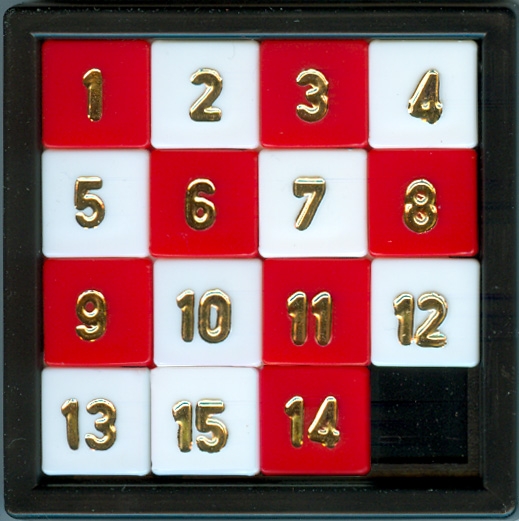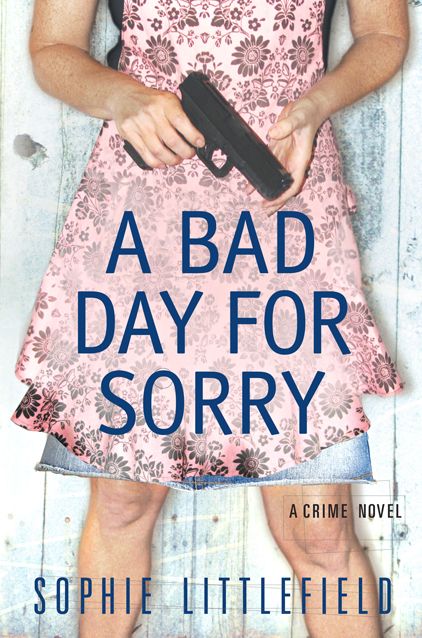Monday, June 14: The Scribbler
AMBIENT NOYES
by James Lincoln Warren
Have you ever heard of Ernest U. Kinsey? Probably not, but I’ll lay you fifteen to one that you’ve used his invention, or at least the simplified version of it introduced by Noyes Palmer Chapman.
Kinsey invented a puzzle consisting of 35 numbered square tiles inside a square frame and patented it in 1878 as “Puzzle Blocks”. The tiles and the frame were grooved, forming a 6×6 matrix, so you could move individual tiles up or down or sideways and change their order. The object of the game was to arrange the tiles in sequence. I know nothing else of Mr. Kinsey but this reference found in a 1902 trade journal called Telephony:
Noyes Chapman was a civil servant, the Postmaster of Canastota, New York, a small town east of Syracuse. Chapman’s version had only 15 blocks, but he was denied a patent for it in 1880 because it was too similar to Kinsey’s. To us, though, it is more familiar—the famous “15 puzzle”.1
In 1896, Sam Loyd, the “Puzzle Prince” of the 19th century and the author of a couple of very challenging puzzle books I have on my book shelf, claimed to have invented the 15 puzzle twenty years before, but he was a notorious liar—Martin Gardner called him “America’s greatest puzzler . . . but also obviously a hustler.”2
Now, I don’t usually stray into mathematical games, Leigh being our resident Puzzle Master (as I have noted before). But metaphor being my life, I am always struck by the analogy between recreational puzzles and crime stories. Usually a fair-play mystery is described as a jigsaw—Lord Hogbottom3 deduces from the callus on Colin St. Clare’s thumb that he secretly plays the clarinet in a Soho Dixieland jazz club on weekends, and is therefore the murderer. The last piece is put into place!
The jigsaw puzzle is a good metaphor, since you can’t see the picture until the pieces are fitted together, and that’s what the detective metaphorically does in a mystery. But it’s not a great metaphor. After all, most of the time, that last piece isn’t really needed for one to see the picture, is it? So in a strict sense, a slide puzzle is more accurately representative of a fair-play mystery short story than a jigsaw is, especially if the tiles are letters instead of numbers.
If you can’t see it, allow me to explain.
The 15 puzzle puts exactly the same basic principles into play as a fair-play mystery short story does. If you accept each letter as a clue, and posit that the solution to the mystery is what the letters are supposed to spell out, then the analogy becomes crystal clear. First, all the clues are plainly visible. Secondly, they are revealed out of order and context. Thirdly, the puzzle is too compact to permit any complex red herrings. And lastly, the clues’ significance is entirely in how they interrelate . I think that’s a pretty good description of a classic detective story, don’t you?
But speaking of clues, I myself have not a one as to what the letter puzzle above is supposed to spell out. I’m hopeless with anagrams. Maybe it’s in French or German, anyway.
Anyone?
- AKA the “slide puzzle”, “gem puzzle”, “mystic square”, etc. [↩]
- By the way, the particular puzzle shown is arranged according to one of Sam Loyd’s shameless publicity stunts. When Loyd was claiming to be the inventer of the puzzle, he also offered a $1000 reward to anyone who could solve this particular puzzle, knowing that it is impossible to do so with the 15 and 14 reversed as they are. It became something of a fad to try and solve it, but of course it was a complete waste of time. [↩]
- In case you were wondering, Lord Hogbottom was invented by Jan Burke some years ago to illustrate how not to post Blatant Self Promotion (known in the trade as “BSP”) messages on SoCalMWA‘s listserv, of which she was the founder and first moderator: “My latest Lord Hogbottom novel has been nominated for a Piggy! I am so excited!” I’ve used his name to represent the generic amateur ratiocinative sleuth ever since, as a natural foil to the venerable Inspector Plod and Garrison Keillor’s archetypal hard-boiled P.I. Guy Noir. [↩]




























